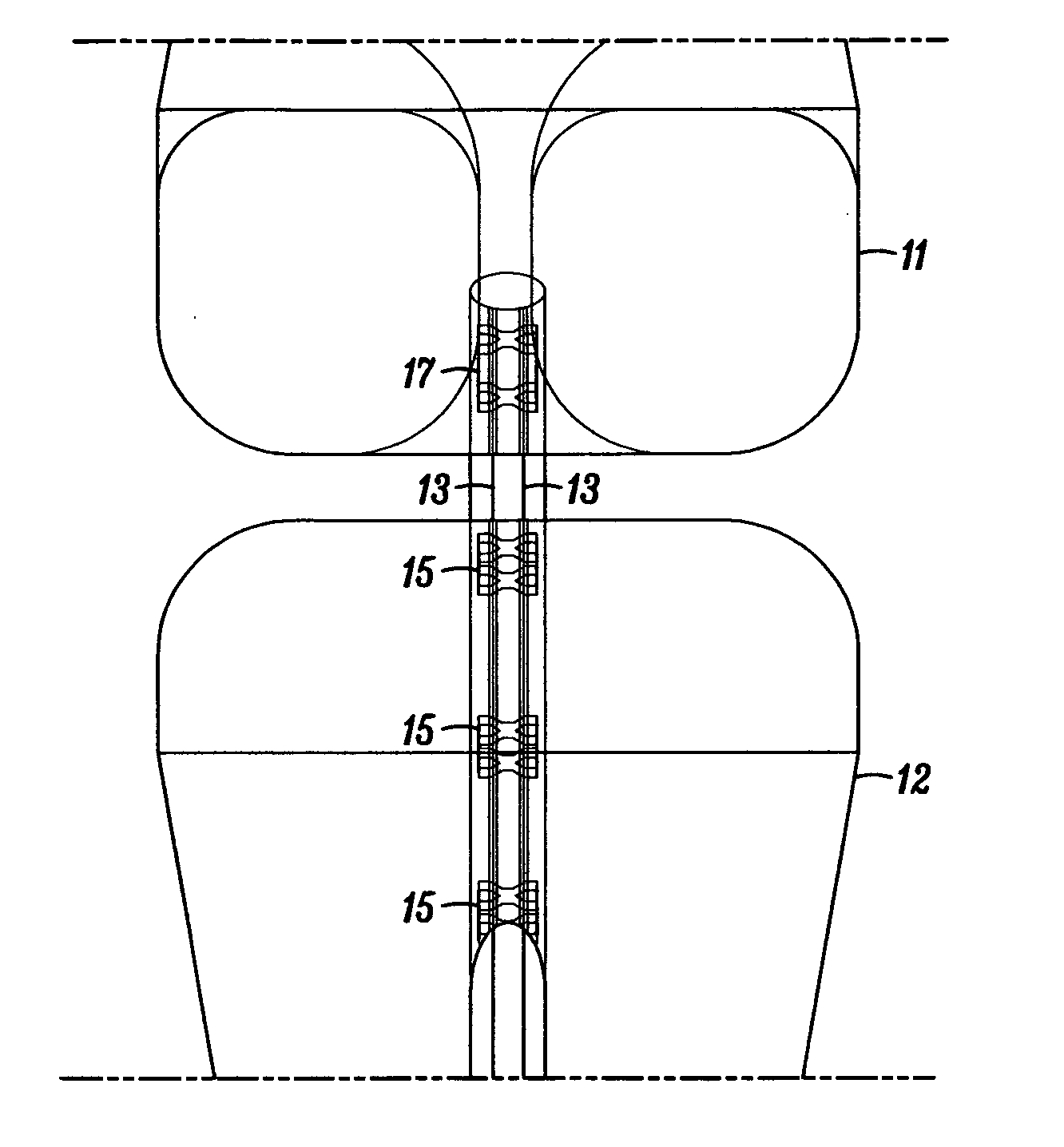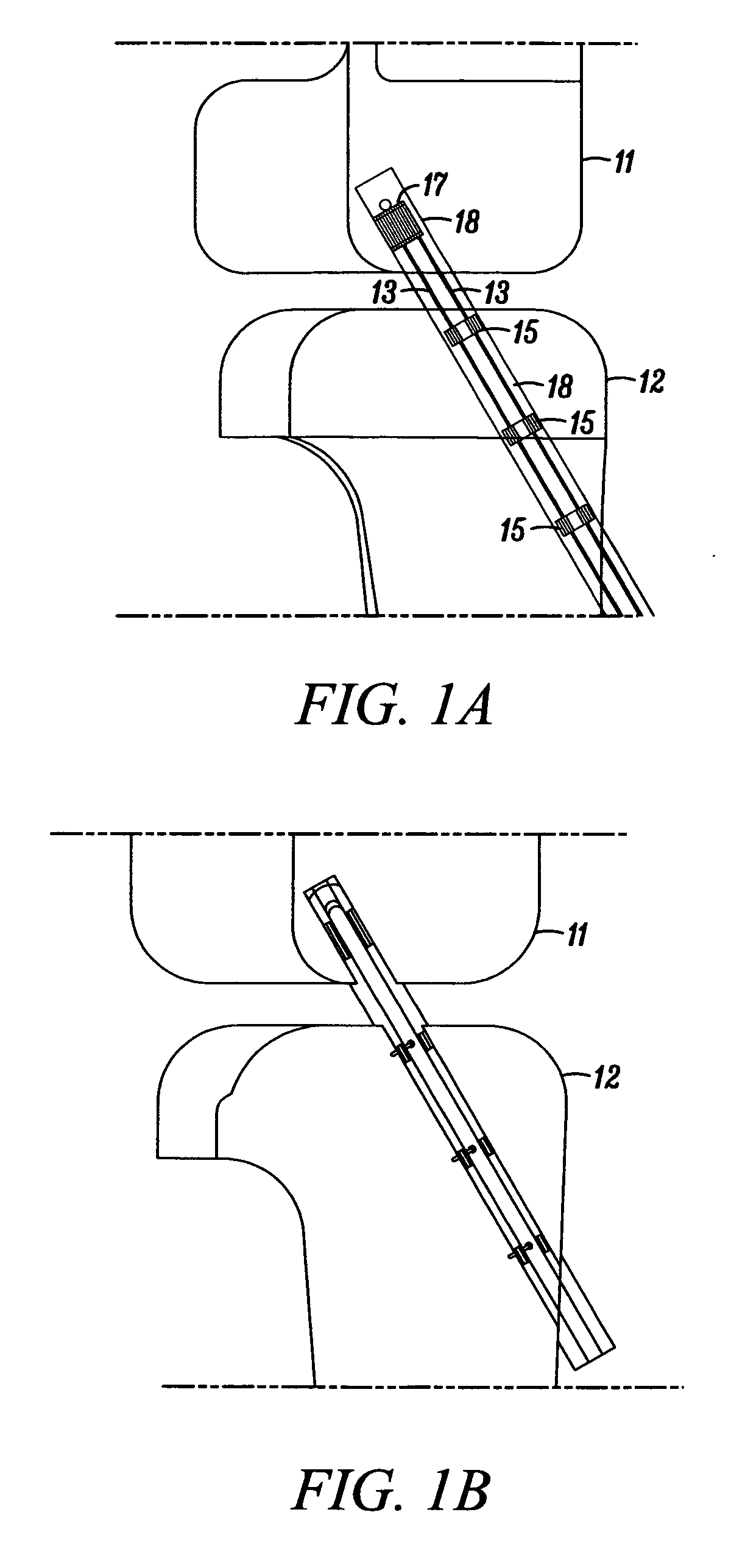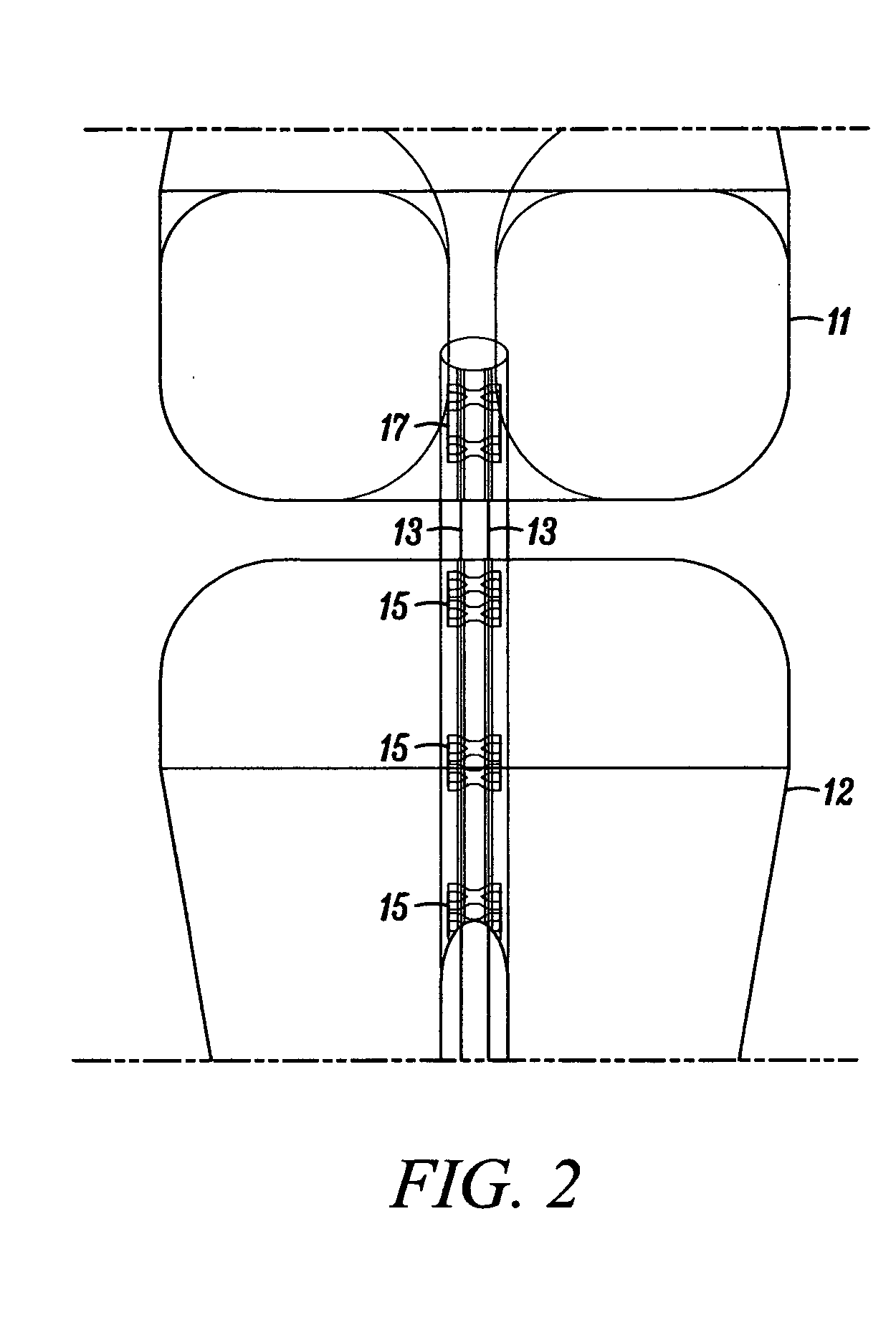Devices, systems and methods for material fixation
a technology of material fixation and devices, applied in the field of devices, systems and methods for material fixation, can solve the problems of difficulty in traditional techniques used to fix tendons to bone, difficulty in repairing, and difficulty in achieving the effect of preventing dislocation of anchors, and sufficient pull-out forces
- Summary
- Abstract
- Description
- Claims
- Application Information
AI Technical Summary
Benefits of technology
Problems solved by technology
Method used
Image
Examples
embodiment 71
[0137]FIGS. 12A to 12D show an isometric view, a side view, a cross-sectional view, and a side-sectional view of the deployment instrument 41 in FIG. 4A with the substantially non-cylindrical direct anchor embodiment 71 of FIGS. 7 and 8 positioned for placement. As shown in FIGS. 12B and 12D, the deployment instrument 41 is positioned between the strands 122 of the ACL graft free ends to secure the ACL graft 122 to the tibia 121. After placement, the dilator 45 is actuated thereby expanding the direct anchor 71 inside the drilled bone hole 123, compressing the tendon free ends 122 against the bone surface defined by the drilled hole 123 and engaging the securing extensions of the direct anchor 71 against the bone 121.
[0138]FIGS. 13A to 13D show exemplary steps for deploying and attaching a strand of tendon or graft within a drilled bone hole. The deployment instrument 41 of FIG. 4A is used to insert the looping strand 132 of tendon and the direct anchor 139 into a predrilled bone ho...
embodiment 141
[0139]FIGS. 14A to 14D show two isometric views, a side view, and a side-sectional view, respectively, of an alternative deployment instrument embodiment 141 according to the present invention. This deployment instrument 141 uses an anvil 142 to support the direct anchor 143 while a shaft 144 incorporating an expansion transition is actuated and advanced relative to the direct anchor 143. Once actuated, the expansion shaft 144 is used to expand the direct anchor 143 into a radially enlarged orientation. Once fully expanded into the bone hole, the anvil 142 releases from the central lumen of the direct anchor 143 signaling full expansion of the direct anchor 143 thus completing attachment of the tendon(s) to the surface of the bone defined by the drilled hole. Until the direct anchor 143 is fully expanded, the anvil 142 supports the direct anchor 143 as the expansion shaft 144 continues to move axially further expanding the direct anchor 143.
[0140] This exemplary deployment instrumen...
embodiment 191
[0145]FIGS. 19A and 19B show an isometric and a top view of an alternative substantially non-cylindrical direct anchor embodiment 191 that incorporates “butterfly” extensions 192 that engage the surface of the bone defined by the drilled hole, and slots 193 that create flaps 194 that, once positioned and actuated, engage either the tendon and / or the surface of the bone defined by the drilled hole to increase the bond strength between the substantially non-cylindrical direct anchor 191 and the tendon to the bone.
[0146]FIGS. 19C and 19D show an isometric view and a top view of the substantially non-cylindrical direct anchor embodiment 191 in FIGS. 19A and 19B in an expanded orientation with the substantially non-cylindrical direct anchor 191 fully deformed to compress tendon against the surface of the bone defined by the drilled hole and engage the bone anchor to that surface.
[0147]FIGS. 20A and 20B show isometric views of two alternative direct anchor embodiments 201 and 205 that in...
PUM
 Login to View More
Login to View More Abstract
Description
Claims
Application Information
 Login to View More
Login to View More - R&D
- Intellectual Property
- Life Sciences
- Materials
- Tech Scout
- Unparalleled Data Quality
- Higher Quality Content
- 60% Fewer Hallucinations
Browse by: Latest US Patents, China's latest patents, Technical Efficacy Thesaurus, Application Domain, Technology Topic, Popular Technical Reports.
© 2025 PatSnap. All rights reserved.Legal|Privacy policy|Modern Slavery Act Transparency Statement|Sitemap|About US| Contact US: help@patsnap.com



